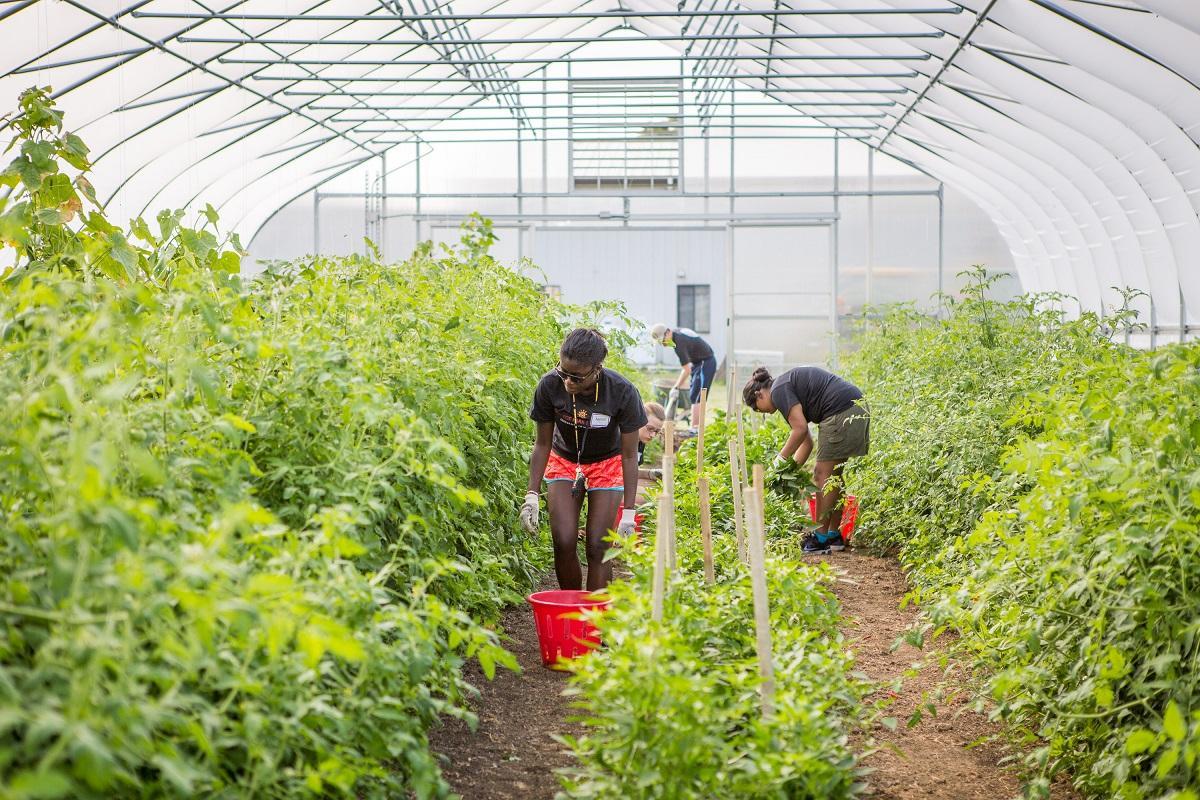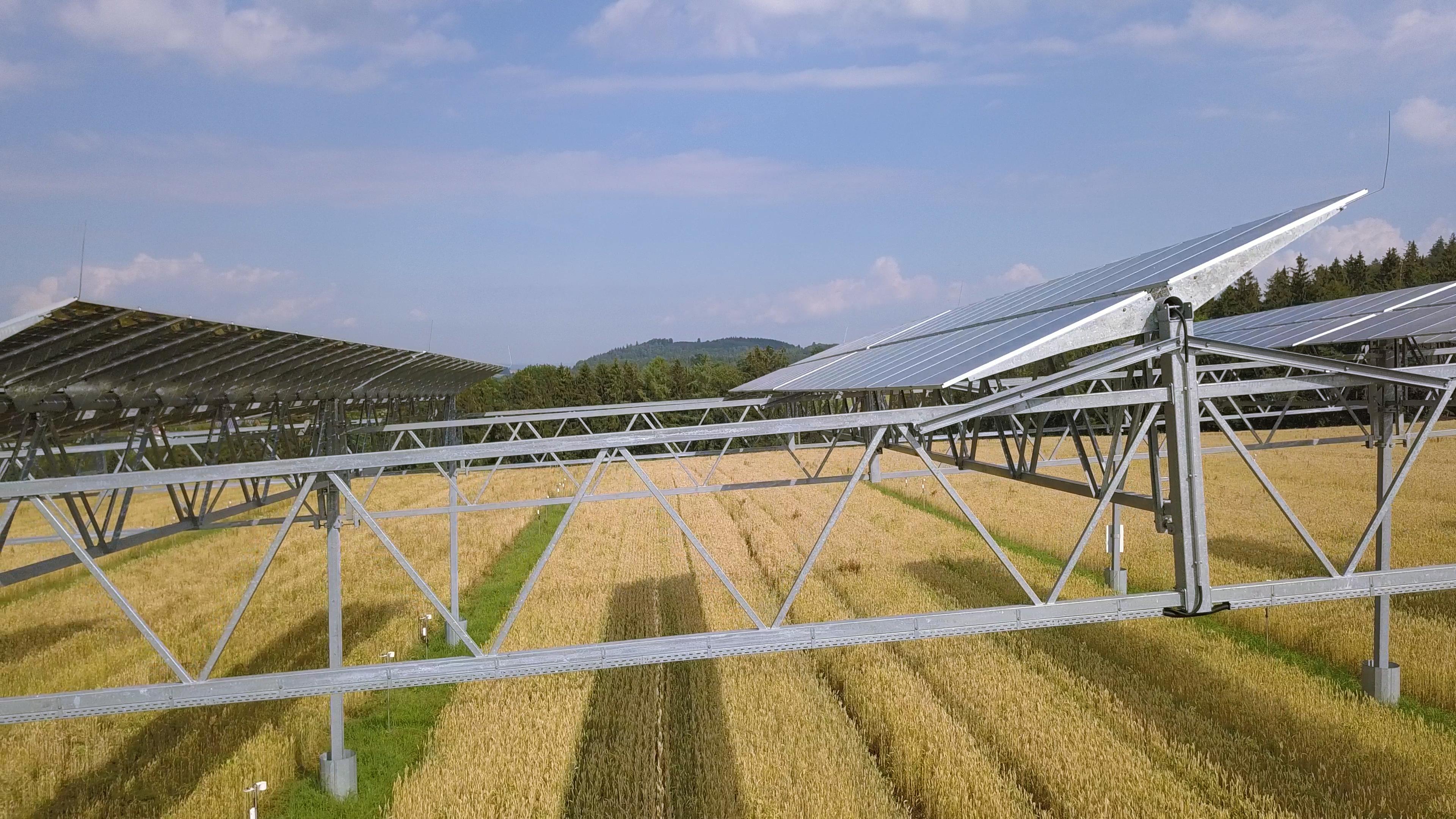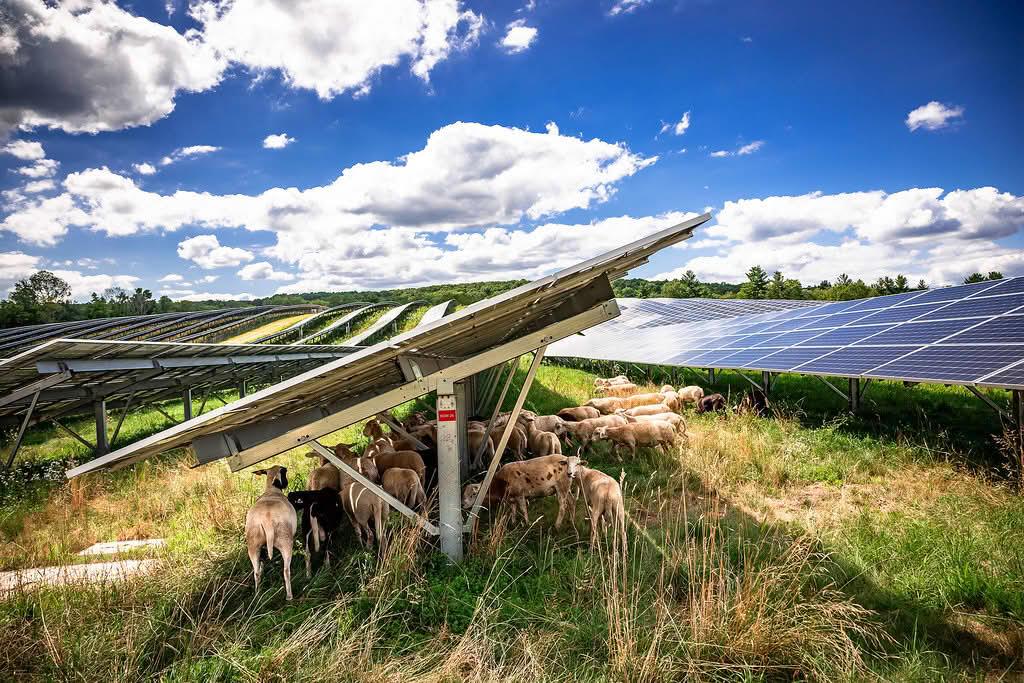Article by Vivian Maneval '27
Beneath the shade of solar panels, crops can thrive, livestock can wander, and the plot of land that feeds our power grids can also feed our families. This is the promise of agrivoltaics, an innovative approach that combines renewable energy generation with agricultural production.
For the University of Maryland, this innovation feels like home. Founded as the Maryland Agricultural College in 1856, the university has deep roots in agricultural research and practice. Maryland’s lands have long been places of nourishment and abundance. Now, they may also become engines of clean energy and models for sustainable land use.

Visions of Innovation
At its heart, agrivoltaics is about coexistence. Instead of choosing between food and energy production, both can thrive side by side. Agrivoltaics refers to the co-location of agricultural activities, including crop cultivation and livestock grazing, with solar panel installations on the same land.
Solar energy is a vital clean energy source and approach to reducing greenhouse gas emissions; however, large-scale solar farms often compete with agriculture for land. Both rely on large, flat plots with abundant sunlight. A 2020 report from the Governor’s Renewable Energy Development and Siting Task Force warned that, to meet renewable energy goals, Maryland may need to convert 7,750–33,000 acres of farmland to solar, placing at least 3% of its most valuable farmland at risk.
Agrivoltaics offers a solution. By raising solar panels above fields, farmers can generate clean electricity while still using the land for crops and livestock. The shade from the panels can ease heat stress on plants, conserve water, and improve conditions for grazing animals, creating a mutually beneficial system.

This concept inspired the Maryland Agrivoltaic Demonstration for Research, Education, and Outreach, a project led by Drew Schiavone, an Energy Conservation and Technology Specialist in the College of Agriculture and Natural Resources (AGNR). Backed by a $100,000 Sustainability Fund Grant in 2023–2024, the project will design and install solar arrays at two University Research and Education Centers (RECs), with the hope of serving as a model for the state and the region.
“When the general public sees these facilities, we want them to see that we’re exemplifying [university and state] sustainability metrics,” Schiavone explains. By locating agrivoltaic systems at the university’s satellite research centers, he hopes to demonstrate that with careful design and creativity, every UMD facility, whether on or off the College Park campus, can contribute to shared sustainability and greenhouse gas reduction goals.
From Research to Reality
Schiavone's project will break ground at the Wye REC in Queenstown and the Western Maryland REC in Keedysville. These sites, co-hosted by AGNR and the University of Maryland Extension, will serve as hubs for state-of-the-art agrivoltaic research in the region.
Currently in the research phase, the project has already explored economic feasibility, crop selection, and scalability. While solar panels are not yet installed, a team of student interns and AGNR faculty has conducted preliminary soil and climate assessments and modeled potential energy outputs. Focus groups and interviews with stakeholders have also provided valuable insight into other barriers and opportunities of agrivoltaic adoption.
“Livestock makes an easy integration,” Schiavone notes, but the real challenge is identifying profitable shade-tolerant crops. Early indications suggest that high-value specialty crops, such as berries, squash, and mushrooms, are promising candidates. Understanding which crops are most profitable is critical, since agrivoltaic systems will only gain traction if they can demonstrate equal or greater returns compared to conventional farming or standalone solar fields.

Why It Matters for UMD
For Schiavone, the Sustainability Fund project extends beyond the two research plots. It’s about connecting UMD’s sustainability mission with Maryland’s largest commercial industry: agriculture. In the Baltimore–D.C. corridor, he says, it’s easy to forget how central agriculture is to the state. Yet, it accounts for 32% of Maryland’s land use and remains a critical driver of the state economy. As solar expansion accelerates, protecting farmland becomes essential.
This project directly supports Maryland’s ambitious clean energy transition by supporting the Renewable Portfolio Standard, the Clean Energy Jobs Act, the Climate Solutions Now Act, and the Renewable Energy Certainty Act . These policies aim for 50% of electricity consumed in Maryland to come from renewable energy sources by 2030, 14.5% from solar by 2028, and a statewide greenhouse gas emission reduction of 60% by 2031 compared to a 2006 baseline. Post-installation, the agrivoltaic demonstration systems are projected to provide 150 kW of solar energy, offsetting facility energy costs and eliminating an estimated 16 pounds of carbon dioxide (CO₂) emissions annually. Once scaled up, UMD Extension surveys suggest that agrivoltaics in Maryland could result in ~33.8 fewer pounds of CO₂ entering the atmosphere per acre annually. For the state, this project will help achieve the governor’s priority to make Maryland a leader in clean energy and the greenest state in the country. On a global scale, this work reflects progress towards achieving two key UN Sustainable Development Goals, advancing both SDG 7: Affordable and Clean Energy and SDG 2: Zero Hunger.
Looking Ahead
Though in its early stages, the Maryland Agrivoltaic Demonstration is already planting seeds for future opportunities. A public website is set to launch soon, followed by outreach through webinars, social media, and blog content. Student involvement is expected to grow through capstone projects and research opportunities. Because agrivoltaics spans so many disciplines—including engineering, economics, and land use management—Schiavone emphasizes that involvement is not limited to those in the College of AGNR.
Ultimately, this project represents more than a new renewable energy installation. It is a blueprint for climate resiliency, reimagining farmland as a multifunctional landscape where crops and clean energy can exist simultaneously. In the face of climate change, innovations such as these are not just inspiring—they are essential.
This initiative was made possible by the UMD Sustainability Fund, which awards up to $800,000 each year to support projects that improve environmental performance, advance student learning, and generate applied research. Proposals for the 2025 funding cycle are due October 15th (priority deadline) and January 15th (final deadline). For smaller projects ($2,000 or less), Sustainability Mini-Grants are also available.
